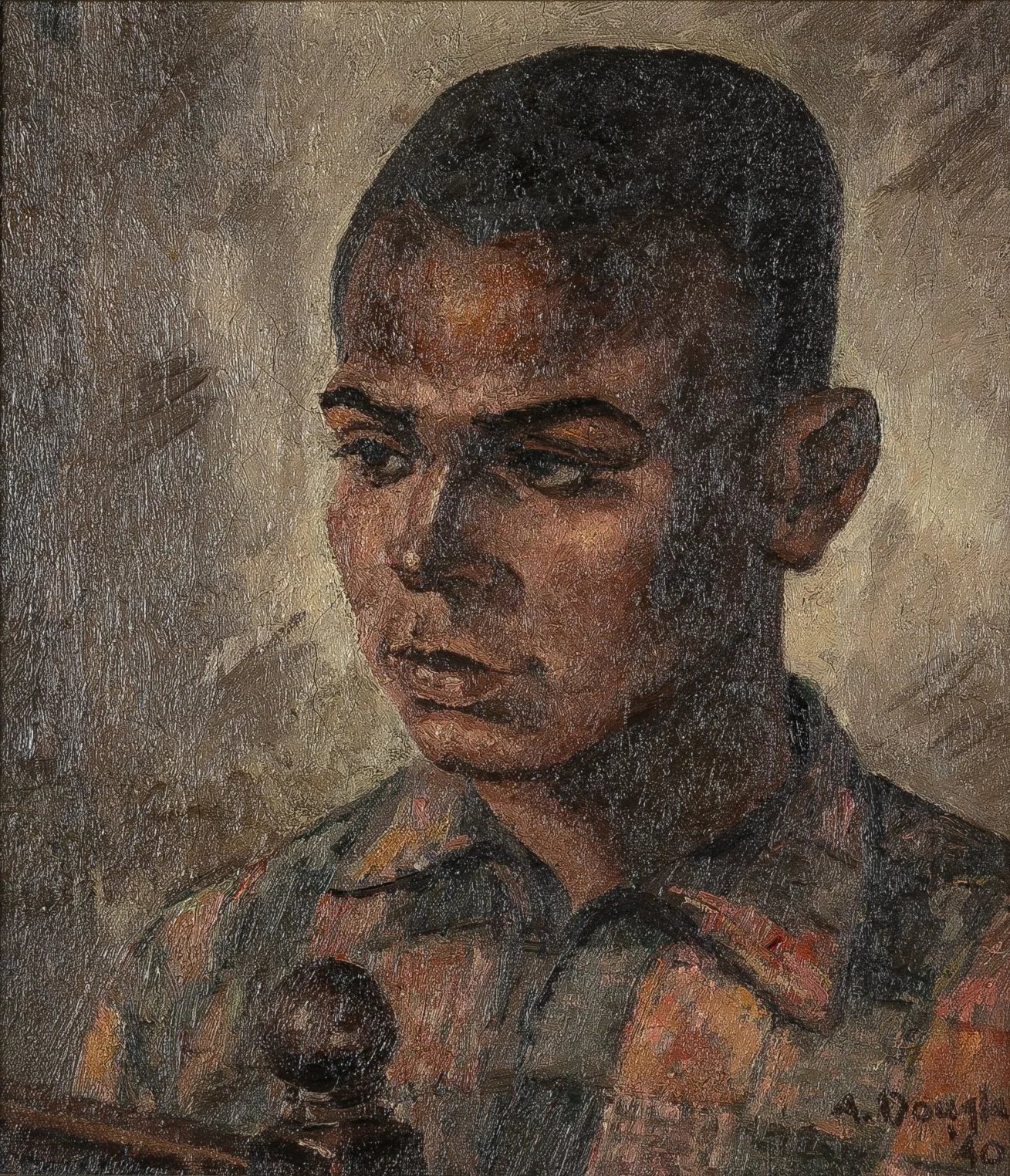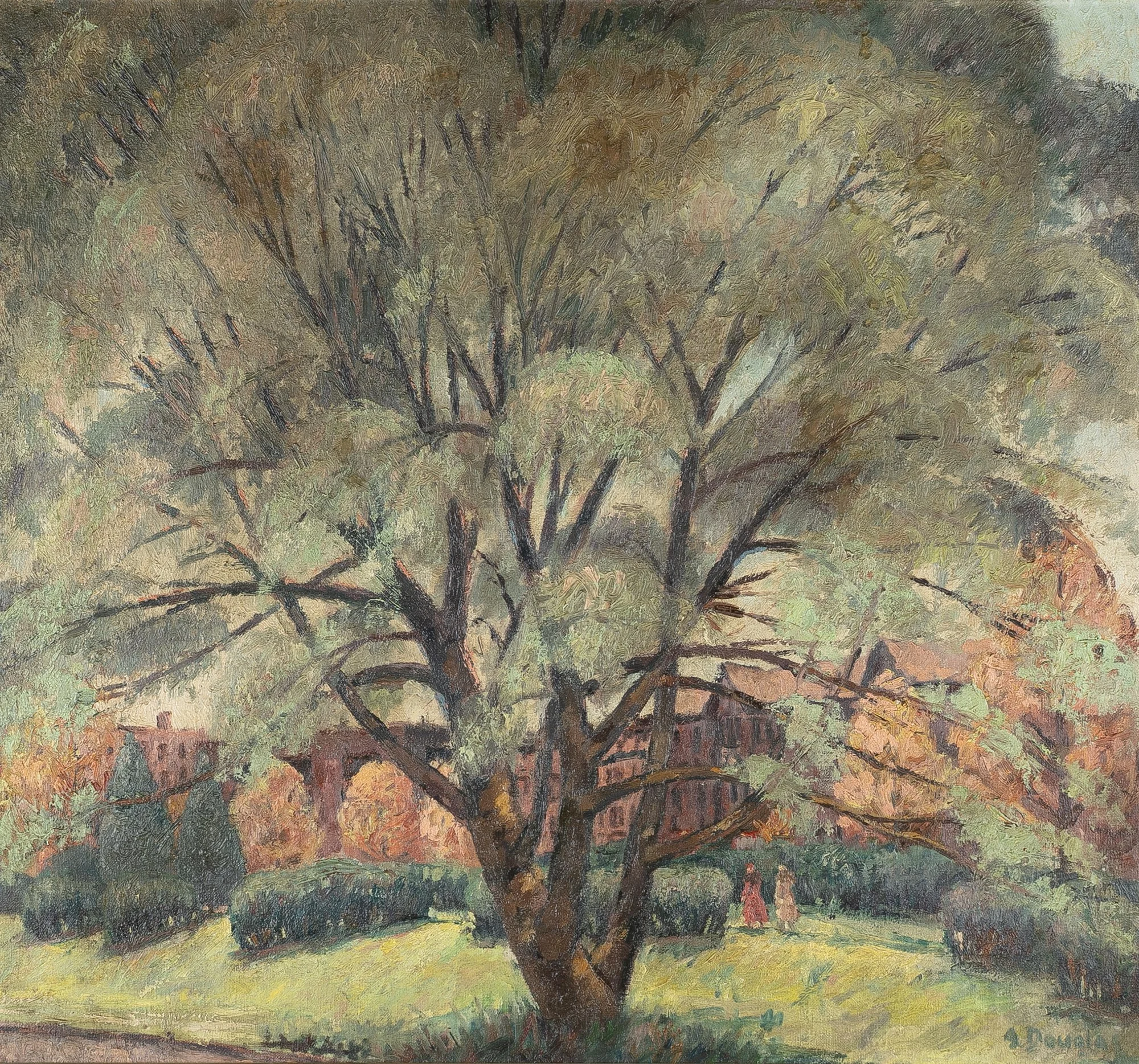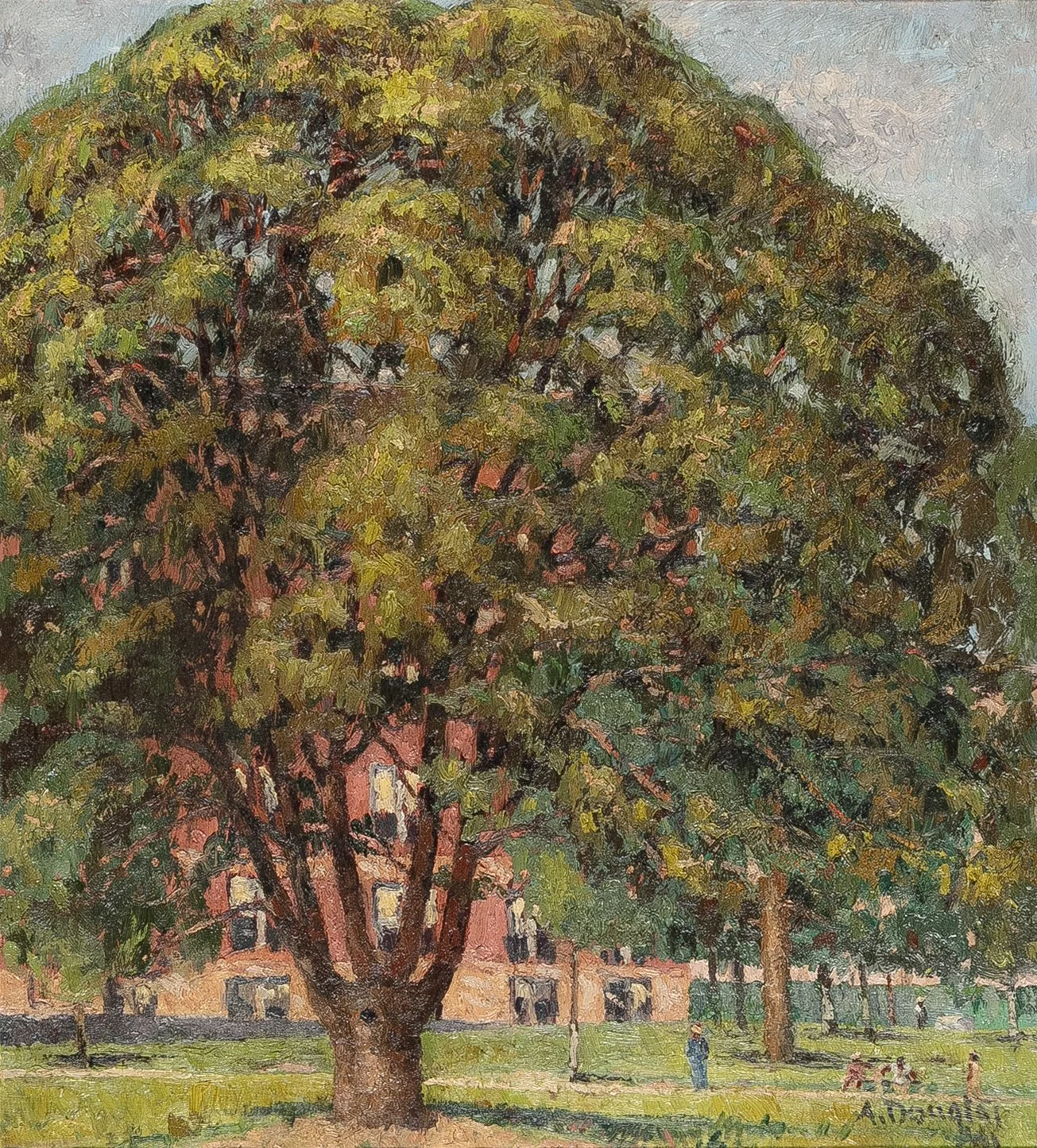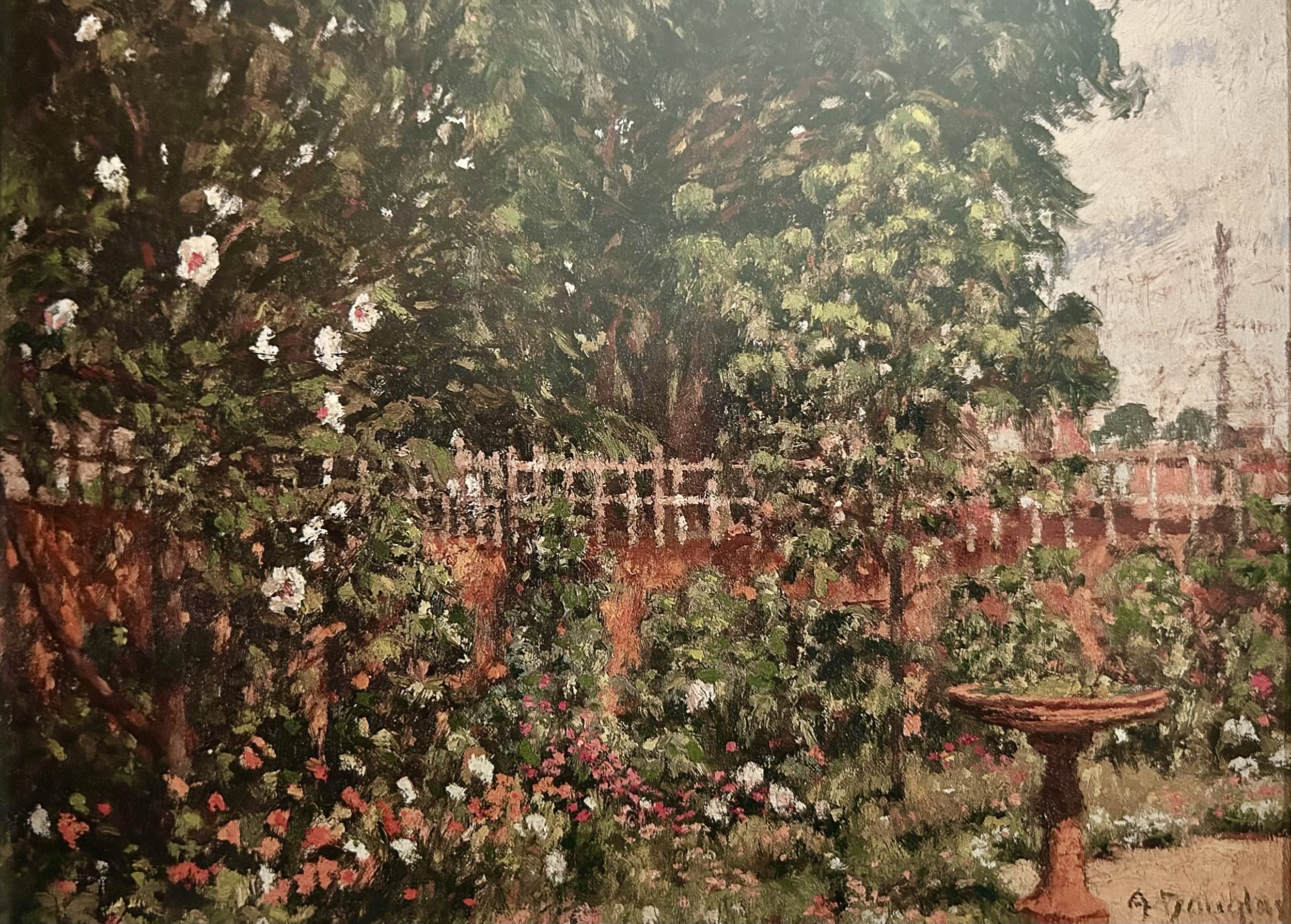Aaron Douglas (1899-1979)
Aaron Douglas was born in Topeka, Kansas in 1899. After he graduated high school, Douglas moved to Detroit, Michigan, working odd jobs while taking classes at the Detroit Institute of Arts. Later, he attended the University of Nebraska where he received his BFA degree in 1922. After teaching for a time at Lincoln High School in Kansas City, Missouri, Douglas moved to New York City in 1925 to be a part of Alain Locke’s New Negro Movement. There, he studied with German/American portrait artist Winold Reiss, who encouraged Douglas to introduce African imagery and themes into his paintings. As Douglas developed this individual style, he became the figure to whom the Harlem Renaissance aspired to emulate.
Murals and drawings were his primary focus early in his career. He created illustrations for several publications, including Opportunity and The Crisis. In 1934, he was commissioned to do a series of murals at the Countee Cullen Branch of the New York Public Library. This was to be Douglas’s most well-known mural series. The series comprises four chronological compositions that highlight African-American heritage and history. A series of concentric circles expanded from a fixed point, with figure elements superimposed on its background. The person, or object, would bear several diffused shades of the same color, lending his work a dreamlike quality. These murals were especially noteworthy for their chromatic complexity and sophisticated design.
Aaron Douglas received two Rosenwald Fellowships, one for study in France and the other to tour Haiti and the American South. He was also elected president of the Harlem Artists Guild in 1935 and worked to obtain WPA recognition and support for African-American artists. In 1939, he founded and chaired the Art Department at Fisk University in Nashville, Tennessee, a position he held until 1966. Douglas died in Nashville in 1979. His work may be found in the collections of Fisk University, TN; Corcoran Gallery of Art, Washington, D.C.; and the de Young Museum, San Francisco, CA.
Douglas’s work has been featured in numerous exhibitions. The retrospective, Aaron Douglas: African American Modernist held in 2008 at the Smithsonian American Art Museum toured nationally and showed nearly 100 works including paintings, prints, drawings and illustrations.
“I had the cherished opportunity to discuss with Douglas the salient contributions he had made to what is now widely celebrated as the Harlem Renaissance. On numerous occasions, Douglas, the gentleman, the sage of black visual culture, the shy and soft-spoken teacher, reminded me that he and and his artist colleagues from all creative disciplines did not call this burgeoning movement the Harlem Renaissance. He noted that they saw the creative revolution under way as being more inclusive and dubbed it the Negro Renaissance , thereby giving it wider boundaries beyond New York; nationwide, if you will, extending into all of Black America.”
Driskell, David. “Some Observations on Aaron Douglas as Tastemaker in the Renaissance Movement .” Aaron Douglas: African American Modernist, Yale University Press ; in Association with Spencer Museum of Art, University of Kansas, New Haven, Lawrence, 2007, p. 87..
Douglas painted portraits and landscapes throughout his career, but most especially from the mid-1930s to the mid-1940s. The portrait of a boy (Untitled), painted in 1940, reveals a remarkable similarity to a portrait the artist did of Marian Anderson the same year. Both works depict the subject very directly with a very limited range of palette to capture their likeness in the drawing rather than an exercise in color.
Aaron Douglas. Family of Aaron Douglas: Wilson A. and Deborah F. Copeland, Detroit; Lauren F. C. N’Namdi, Miami | Courtesy of N’Namdi Contemporary Fine Art. © 2024 Heirs of Aaron Douglas / Licensed by VAGA at Artists Rights Society (ARS), NY.
1940-1942
oil on canvas
25-3/4 x 27-1/2 inches
signed
label verso with White Plains, New York noted
1940-1942
oil on board
21-5/8 x 23-5/8 inches
signed
In the two landscapes, Douglas drew upon the exact opposite, and executed those in a post-Impressionist style, lush with color and little attention to the drawing. These works are reminiscent of his 1944 painting, titled Back Yard Garden, 10th Street, Wilmington, Delaware.
Back Yard Garden, 10th Street, Wilmington, Delaware; Aaron Douglas. Family of Aaron Douglas: Wilson A. and Deborah F. Copeland, Detroit; Lauren F. C. N’Namdi, Miami | Courtesy of N’Namdi Contemporary Fine Art. © 2024 Heirs of Aaron Douglas / Licensed by VAGA at Artists Rights Society (ARS), NY.
The three Aaron Douglas paintings included in the auction come from a family collection in the Chicago area.
Eva Lyons Sanders Sawyer, a music and art enthusiast, was born in Austin, Texas. Her family (Carrington/Lyons) was well documented in the Newberry Library (Austin, TX) as part of the Prescott Papers. As an adult, Eva moved to Queens, New York and became immersed in the art scene there. She was connected socially and professionally with several artists and writers involved with the Harlem Renaissance.
Eva gifted many of her artworks, including these paintings to her niece, Jane Prescott Brown and they remained in the family until they decided to include them in this auction. The Brown family is looking forward to these important historic works being deeply appreciated, protected and cherished as time goes on.





